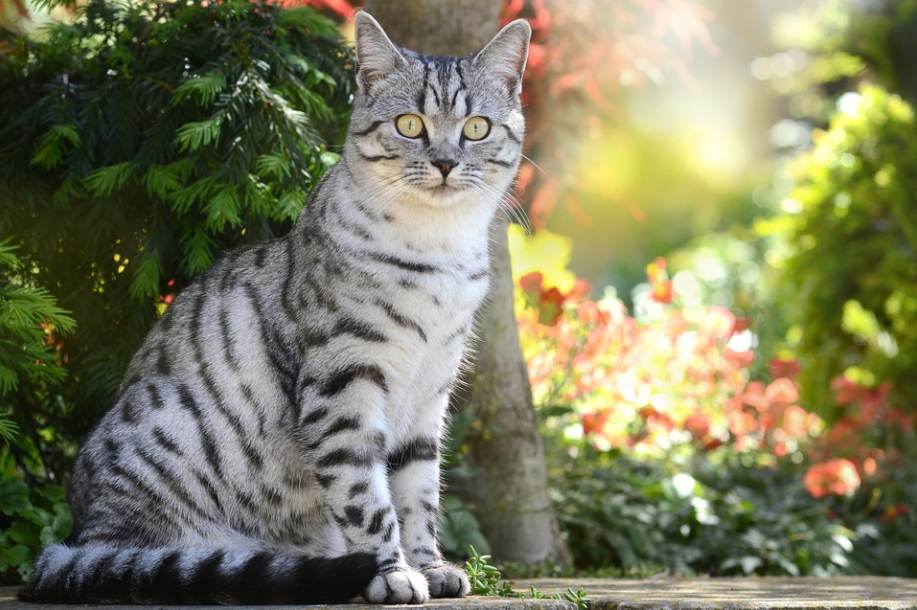The European shorthair cat is a breed that is common throughout the world. It belongs to a group of ‘natural’ or ‘old-style’ cats which are minimally altered from their original form. They are considered to be true to their original conformation and temperament.
This article will give you some information about European shorthair cats, their care, health issues, and grooming needs. The European Shorthair Cat has a short, plush coat that comes in a wide variety of colors and patterns. Most have no undercoat except for a little fluff under the neck and belly. Males tend to be larger than females. Size varies greatly among individuals, so use weight as an indication rather than how small/large a cat looks.
European shorthairs are generally healthy and sturdy, with lithe bodies adapted to an active indoor life coupled with a playful nature that makes it exceptional house pets.
Table of Contents
History of European Shorthair Cats
These cats comes from Western Europe, where the first true Europeans were developed as early as the 16th century England. This occurred along with the development of the English Shorthair Cat which was the European shorthair’s ancestor. They are considered to be their country of origin. Since the European shorthaired cat was at first a pedigreed animal of royalty and nobility, these cats were also displayed in other places such as Russia.
Characteristics of European cats
Easy-going nature
European shorthair cats are known for their placid and easy-going nature, but also for their playful spirit. They often make excellent pets, since they adapt easily to new homes and people. However, all European shorthairs (male and female) tend to spray and fight with other European shorthair males. So there is no point in getting more than one European short hair if it is a male. This breed requires some grooming care due to its short coat.
Intelligence
The European shorthair is known for its intelligent, affectionate personality. They also lack hereditary health issues. They have no breed-specific predispositions toward any diseases or illnesses so they are generally considered good family pets. Some European shorthairs can even learn to fetch balls while others enjoy playing with water from faucets.

Temperament & Appearance
European shorthair cats have a very gentle temperament, making them exquisite pets for people with young children. The cat can even get along well with dogs. Because of their low-shedding coat, they are also hypoallergenic. Many people who have cat allergies can enjoy European shorthaired cats without any problems.
Energetic
Shorthaired cats are typically more energetic than long-haired breeds. Therefore, they are always active and mischievous. These kittens grow up to become complete adults with playful and affectionate personalities. The cats have a wide range of appearances and hues. Orange-tabbies are the most popular hue among European shorthairs, which vary considerably in size. They may be as tiny as a kitten or up to seven times bigger than that.
There is no such thing as a “standard European shorthair” because cats are bred not only for their coat but also for their body shape and disposition. This differs greatly from one cat to the next.
Euopean Shorthair Cat Health
These cats are generally healthy and do not need much veterinary attention. They only require vaccinations, regular checkups, and routine treatment against worms and other parasites such as ticks, ear mites. They hardly ever have hereditary difficulties because of the strict requirements the breeders follow while breeding European shorthaired cats. Cats can live from 15 to 20 years if they receive proper care from their owners. Don’t expose them to any dangerous situations that could shorten their lifespan.
Coat & Care
Because of their low-shedding coats, they require less care than longhaired cats (e.g., persians) do. Although they don’t require as much attention as long-haired breeds do. They must still be groomed since tangles are easily created if they aren’t brushed on a regular basis. These cats should be groomed at least once a day. Twice daily is ideal during spring and fall, when Europeans shed their winter coats to grow new ones. Even more often than Maine Coons, Scottish Folds require a lot of maintenance. If they live in an area with humid conditions, Scottish Folds have a higher risk of getting parasites.
The lack of moisture causes fewer skin problems for these cats since their short hair does not allow them to lick off as much dander. It’s critical for Europeans to get weekly baths because it helps keep their skin healthy and reduces dander. European shorthaired cats should also be brushed on a daily basis using a specialized brush or a gentle towel. If their owners do not maintain the coat properly, especially during the winter when they grow a new coat, these cats have been documented to go bald.

Special attention
Europeans require special attention in the spring when they shed their winter coat and in the fall when growing new ones. They may need daily brushing, especially if living in humid weather or outdoors. If they are not attended to on time, it increases their chances of ticks or parasites such as ear mites. While shedding, a guardian should be near to ensure they don’t scratch their bodies too much.
These cats should also be brushed every day with a soft bristle brush or towel to prevent tangles and hairballs which can cause illness if not kept under control. European shorthaired cats are very healthy but do get sick or infirm at some point, they can live a long life which shows how strong the breed is.
Food
They mainly eat dry food that helps them keep themselves clean. European cats are less likely than longhairs to be able to lick themselves clean as other breeds can. Europeans require special attention in the spring when they shed their winter coat and in the fall when growing new ones.

